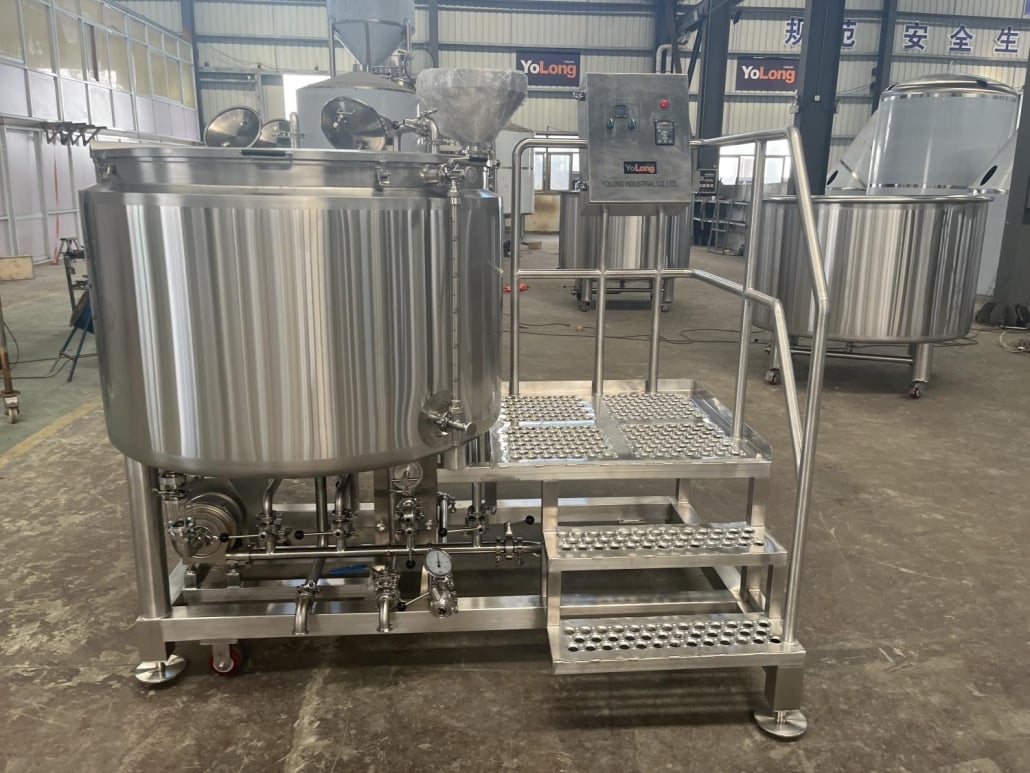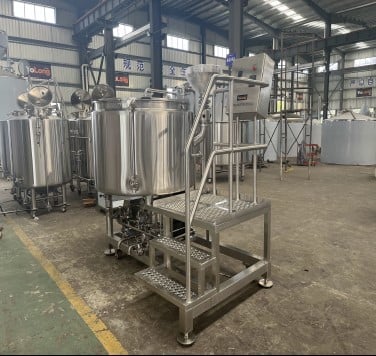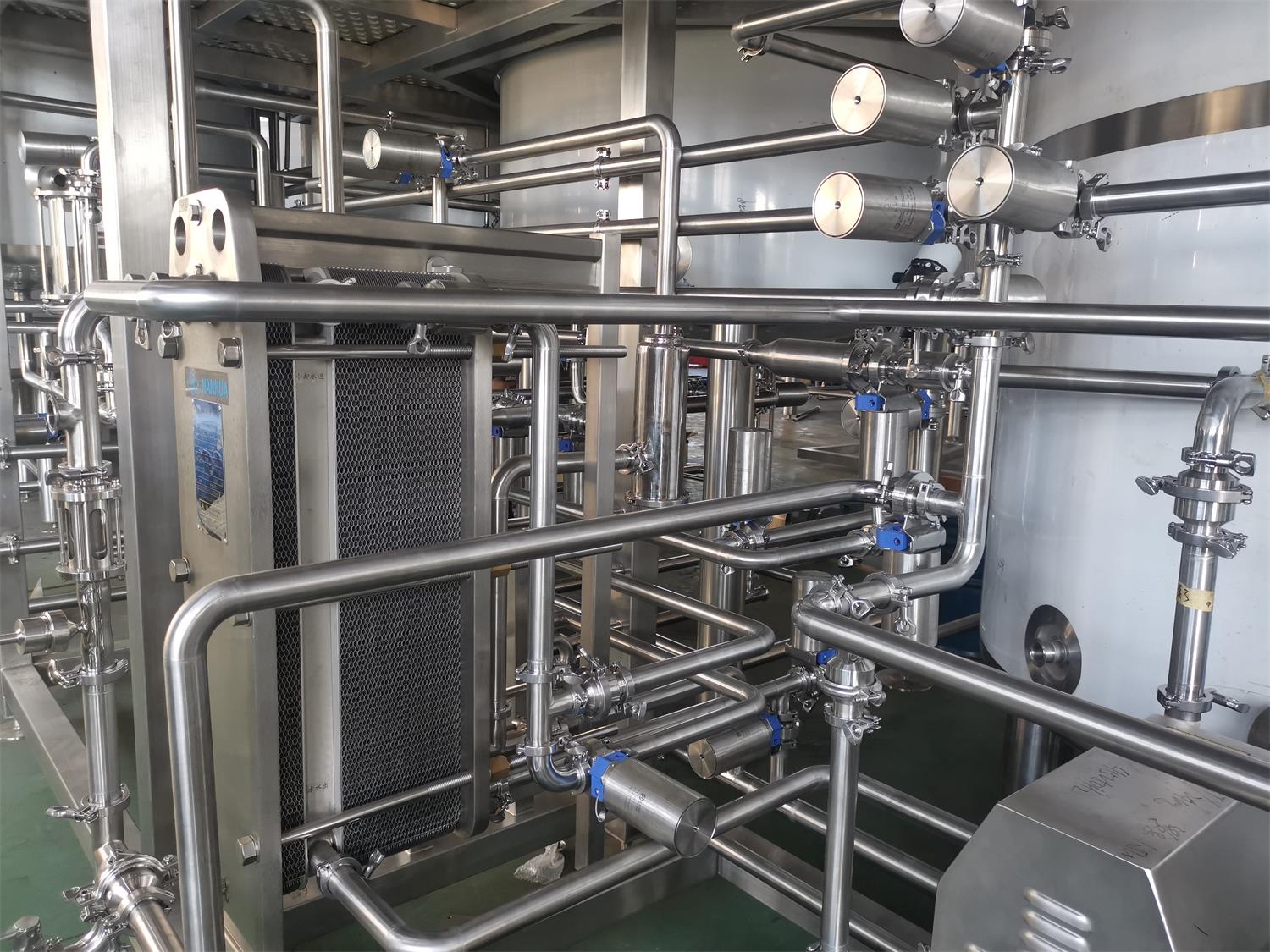Brewery Equipment
Brewing beer is an art, a science, and a passion for many. But behind every great beer is an array of brewery equipment working harmoniously to create that perfect pint. This guide dives deep into the world of brewery equipment, offering an overview, detailed insights into different types of equipment, the brewing process, and much more. Let’s embark on this journey together!
Overview of Brewery Equipment
Brewery equipment is the backbone of any brewing operation, whether you’re a homebrewer or running a commercial brewery. The right equipment ensures efficiency, consistency, and quality in beer production. Understanding the various types, functions, and how they fit into the brewing process is crucial for any brewer.

Guide to Brewery Equipment
Essential Brewery Equipment
Brewing beer involves several key pieces of equipment. Here’s a detailed look at each:
Mash Tun
A mash tun is where the magic begins. It’s a vessel where milled grains (malt) and hot water mix to convert starches into fermentable sugars. The quality of your mash tun directly impacts the efficiency and consistency of your mash.
Lauter Tun
Post-mashing, the mixture moves to the lauter tun. This vessel separates the liquid wort from the solid grain husks. Proper lautering is essential for a clear wort, which is crucial for the fermentation process.
Boil Kettle
Next up is the boil kettle. Here, the wort is boiled, and hops are added for bitterness, flavor, and aroma. Boiling also sterilizes the wort, ensuring a clean fermentation.
Fermenter
The wort is then transferred to a fermenter, where yeast is added to begin fermentation. Fermenters come in various shapes and sizes, each offering different advantages.
Bright Tank
After fermentation, the beer is often moved to a bright tank. This vessel is used for maturing, clarifying, and carbonating the beer before packaging.
Heat Exchanger
A heat exchanger rapidly cools the boiled wort to a temperature suitable for fermentation. This step is vital for preventing unwanted bacterial growth and ensuring a healthy fermentation.
Pumps and Hoses
Efficient movement of liquids is crucial in brewing. Pumps and hoses facilitate the transfer of wort and beer between different stages and vessels.
Kegging and Bottling Equipment
Once the beer is ready, it’s time to package it. Kegging and bottling equipment come in various configurations to suit different scales of operation.
Table of Brewery Equipment Types
| Equipment | Function | Key Features |
|---|---|---|
| Mash Tun | Converts starches into fermentable sugars | Temperature control, false bottom |
| Lauter Tun | Separates wort from grain husks | Slotted plates, sparge arm |
| Boil Kettle | Boils wort and adds hops | Whirlpool capabilities, heating elements |
| Fermenter | Ferments wort into beer | Temperature control, airlocks |
| Bright Tank | Matures, clarifies, carbonates beer | Pressure rated, cooling jackets |
| Heat Exchanger | Cools wort rapidly | Plate or tubular design |
| Pumps and Hoses | Transfers liquids between stages | Food-grade materials, sanitary fittings |
| Kegging/Bottling | Packages beer for distribution | Automated or manual systems |
The Brewing Process
Mashing
The brewing process starts with mashing, where milled grains are mixed with hot water in the mash tun. This process breaks down the starches in the grains into fermentable sugars, creating a sugary liquid known as wort.
Lautering
After mashing, the wort is transferred to the lauter tun. Here, it is separated from the grain husks. The clear wort is collected and moved to the next stage, while the spent grains are removed.
Boiling
The wort is then boiled in the boil kettle. During the boil, hops are added at various stages to impart bitterness, flavor, and aroma to the beer. Boiling also sterilizes the wort.
Cooling
After boiling, the wort needs to be cooled quickly to a temperature suitable for fermentation. This is done using a heat exchanger, which rapidly brings down the temperature of the wort.
Fermentation
The cooled wort is transferred to a fermenter, where yeast is added. The yeast consumes the sugars in the wort and produces alcohol and carbon dioxide. This process can take anywhere from a few days to several weeks, depending on the type of beer being brewed.
Conditioning
Post-fermentation, the beer is moved to a bright tank for conditioning. Here, it matures, clarifies, and carbonates. This step is crucial for developing the final flavor profile of the beer.
Packaging
Finally, the beer is packaged using kegging or bottling equipment. Proper packaging is essential to maintain the quality and freshness of the beer until it reaches the consumer.
Table of Brewing Process Stages
| Stage | Description | Key Considerations |
|---|---|---|
| Mashing | Converts starches to sugars | Temperature control, mash thickness |
| Lautering | Separates wort from grain | Sparging efficiency, clarity of wort |
| Boiling | Boils wort, adds hops | Boil time, hop additions |
| Cooling | Rapidly cools wort | Efficiency, prevention of contamination |
| Fermentation | Yeast converts sugars to alcohol and CO2 | Temperature control, yeast health |
| Conditioning | Matures, clarifies, carbonates beer | Time, pressure control |
| Packaging | Kegs or bottles the finished beer | Oxygen control, sanitation |
Brewery Equipment Capacity, Space, Design, and Customization
Choosing the right equipment for your brewery involves considering capacity, space requirements, design, and customization options. Here’s a detailed look at these factors:
Capacity
The capacity of brewery equipment is a primary consideration. It determines how much beer you can produce in a single batch. From small homebrewing setups to large commercial systems, capacity varies widely.
Space Requirements
Space is a critical factor, especially for small breweries. Efficient use of space can optimize workflow and productivity. Equipment should be chosen based on the available space and layout of the brewery.
Design and Layout
The design and layout of brewery equipment impact both efficiency and safety. Proper layout ensures smooth workflow and minimizes the risk of accidents. Ergonomic design can make the brewing process more comfortable and efficient.
Customization
Many equipment manufacturers offer customization options to suit specific brewing needs. Customization can include size adjustments, additional features, and personalized designs to enhance the brewing process.
Table of Equipment Capacity, Space, Design, and Customization
| Aspect | Details | Key Considerations |
|---|---|---|
| Capacity | Batch size, annual output | Scalability, future growth |
| Space Requirements | Footprint, ceiling height | Workflow efficiency, accessibility |
| Design and Layout | Ergonomics, safety features | Smooth operations, accident prevention |
| Customization | Size adjustments, additional features | Specific brewing needs, enhanced functionality |
Brewery Equipment Suppliers and Price Range
Selecting the right supplier is crucial for acquiring quality brewery equipment. Here’s a look at some reputable suppliers and the typical price ranges for different types of equipment:
| Equipment | Suppliers | Price Range |
|---|---|---|
| Mash Tun | ABC Brew Tech, BrewMaster Equipments | $2,000 – $15,000 |
| Lauter Tun | BrewTech, MicroBrew Supplies | $3,000 – $20,000 |
| Boil Kettle | Stainless Steel Solutions, BrewPro | $4,000 – $25,000 |
| Fermenter | CraftBrew Systems, FermentTech | $1,500 – $10,000 |
| Bright Tank | ClearBrew, BrewFab | $2,000 – $12,000 |
| Heat Exchanger | ChillTech, BrewCooling Systems | $500 – $5,000 |
| Pumps and Hoses | BrewFlow, FluidTech | $300 – $3,000 |
| Kegging/Bottling | KegMaster, BottleTech | $1,000 – $10,000 |
Installation, Operation, and Maintenance of Brewery Equipment
Proper installation, operation, and maintenance are essential for the longevity and efficiency of brewery equipment. Here’s an in-depth look at these aspects:
Installation
Installation should be done by professionals to ensure safety and efficiency. Proper installation includes correct positioning, secure connections, and compliance with local regulations.
Operation
Operating brewery equipment requires knowledge and precision. Operators should be trained to handle the equipment correctly, follow safety protocols, and maintain optimal brewing conditions.
Maintenance
Regular maintenance is crucial to prevent breakdowns and ensure consistent performance. This includes cleaning, inspections, and timely repairs.
Table of Installation, Operation, and Maintenance
| Aspect | Details | Key Considerations |
|---|---|---|
| Installation | Professional setup, secure connections | Safety, compliance with regulations |
| Operation | Training, precision handling | Optimal brewing conditions, safety protocols |
| Maintenance | Regular cleaning, inspections, repairs | Prevent breakdowns, ensure consistent performance |
Choosing the Right Supplier
Selecting the right supplier for your brewery equipment can make a significant difference in your brewing operation. Here’s how to
choose wisely:
Reputation and Reviews
Look for suppliers with a good reputation and positive reviews. Customer testimonials and industry reviews can provide insights into the quality and reliability of the supplier.
Quality and Warranty
Ensure that the equipment is of high quality and comes with a warranty. A good warranty can save you money on repairs and replacements in the long run.
Customer Support
Good customer support is essential, especially when dealing with complex equipment. Choose a supplier that offers excellent after-sales service and technical support.
Pricing and Value
While cost is a crucial factor, it shouldn’t be the only consideration. Evaluate the overall value, including the quality of equipment, warranty, and customer support.
Table on How to Choose a Supplier
| Criteria | Details | Key Considerations |
|---|---|---|
| Reputation and Reviews | Customer testimonials, industry reviews | Quality, reliability |
| Quality and Warranty | Equipment quality, warranty terms | Long-term savings, reliability |
| Customer Support | After-sales service, technical support | Efficient problem resolution, ongoing support |
| Pricing and Value | Cost vs. overall value | Budget considerations, long-term benefits |
Advantages and Limitations of Brewery Equipment
Understanding the pros and cons of different brewery equipment can help in making informed decisions. Here’s a comparison:
Advantages
- Efficiency: Modern equipment enhances brewing efficiency, allowing for higher production rates.
- Consistency: High-quality equipment ensures consistent results, batch after batch.
- Scalability: Scalable equipment can grow with your business, accommodating increased production needs.
- Customization: Many suppliers offer customization options to meet specific brewing requirements.
Limitations
- Cost: High-quality equipment can be expensive, posing a significant investment.
- Space Requirements: Larger equipment requires more space, which can be a constraint for small breweries.
- Maintenance: Regular maintenance is necessary, which can be time-consuming and costly.
- Complexity: Advanced equipment may require specialized knowledge and training to operate and maintain.
Table Comparing Advantages and Limitations
| Aspect | Advantages | Limitations |
|---|---|---|
| Efficiency | Higher production rates | Can be costly |
| Consistency | Ensures consistent results | Requires precise control and monitoring |
| Scalability | Grows with business needs | May require significant space |
| Customization | Meets specific brewing needs | Custom features can add to cost and complexity |

FAQs
What is the most important piece of brewery equipment?
The most crucial piece of equipment can vary depending on the brewery’s focus. However, many brewers consider the fermenter to be essential because it directly affects the quality and characteristics of the final beer.
How much does it cost to start a small brewery?
Starting a small brewery can cost anywhere from $100,000 to $500,000, depending on the size, equipment quality, and location. This estimate includes equipment, facility setup, and initial operating costs.
How often should brewery equipment be cleaned?
Brewery equipment should be cleaned after each use to prevent contamination and ensure consistent quality. Regular deep cleaning and maintenance schedules should also be followed.
Can I upgrade my brewery equipment as my business grows?
Yes, many equipment suppliers offer scalable solutions that allow you to upgrade your equipment as your production needs increase.
Conclusion
Choosing the right brewery equipment is a critical step in setting up a successful brewing operation. By understanding the different types of equipment, their functions, and how they fit into the brewing process, you can make informed decisions that enhance your brewing efficiency, consistency, and quality. Whether you’re just starting out or looking to upgrade your existing setup, this guide provides valuable insights to help you navigate the world of brewery equipment. Cheers to great brewing!
Share this entry
Interested in learning more about Brewing Systems including additional details and pricing information? Please use the form below to contact us!
YOLONG BREWERY EQUIPMENT FAQS
- Commercial Brewery / Craft Brewery / Microbrewery / Nanobrewery
- What is The Difference Between Craft Beer and Industrial Beer?
- The Bespoke Differences In Custom Brewing Systems
- Everything You Need to Know About Kettle Souring
- How to Choose Brewing Equipment for Your business?
- How To Choose The-Best Partner To Build Your Commercial Microbrewing System?
- Two Detection Sensors That You Need To Use In Your Brewhouse System
- Remote Control Applications in Brewing Equipment/How does it work?
- How To Clean Your Brand New Brewery Tanks?

